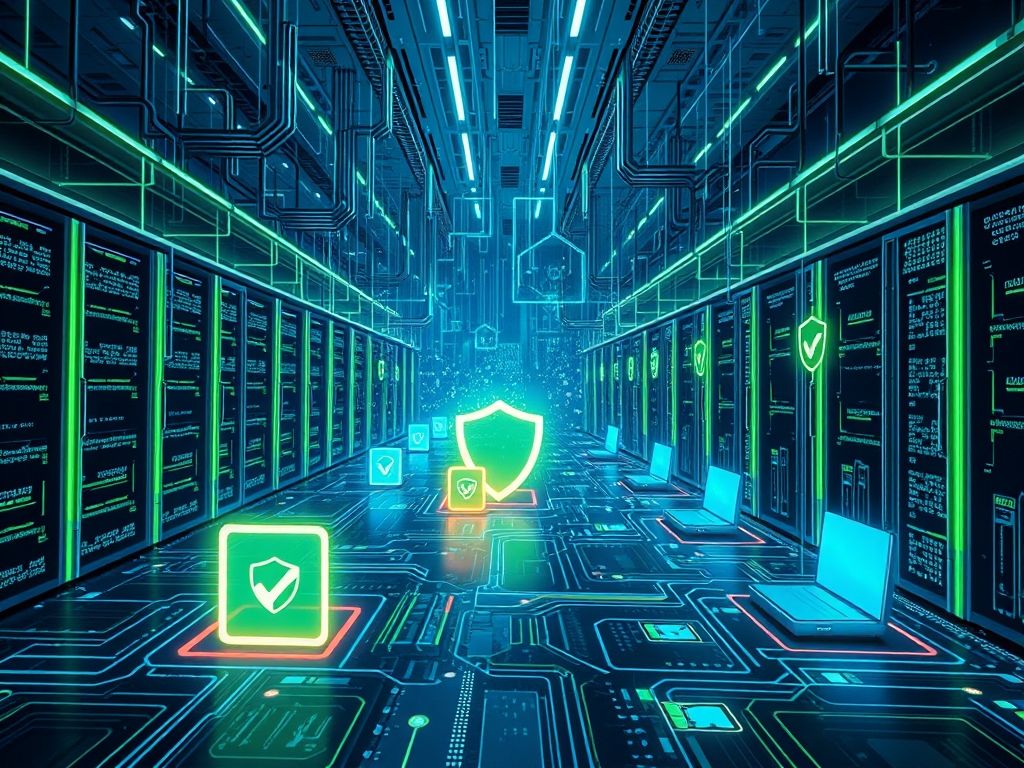Cyber Security Solutions: Comprehensive Protection for the Digital Era
In today’s interconnected world, cyber security solutions are no longer optional; they are essential for protecting businesses, individuals, and governments from malicious attacks. With the exponential growth of data, cloud adoption, and digital transformation, the threat landscape has become more complex. Organizations must deploy advanced cyber security strategies to ensure confidentiality, integrity, and availability of their systems.
Understanding Cyber Security Solutions
Cyber security solutions are technologies, processes, and practices designed to safeguard networks, devices, programs, and data from attack, damage, or unauthorized access. They provide multi-layered protection against evolving threats such as ransomware, phishing, malware, and insider breaches.
Effective solutions encompass prevention, detection, response, and recovery, offering businesses a robust shield against digital risks. From small enterprises to multinational corporations, adopting tailored cyber security tools ensures business continuity and maintains customer trust.
Types of Cyber Security Solutions
1. Network Security
Network security focuses on protecting an organization’s internal infrastructure by monitoring traffic, identifying anomalies, and blocking unauthorized access. Tools like firewalls, intrusion prevention systems (IPS), and VPNs are integral. Advanced solutions use AI-powered monitoring for real-time detection of unusual activity.
2. Endpoint Security
As remote work becomes the norm, endpoint protection is critical. Each laptop, smartphone, or IoT device serves as an entry point for attackers. Endpoint Detection and Response (EDR) solutions monitor device activity, isolate infected systems, and ensure compliance.
3. Cloud Security
With most organizations migrating to the cloud, cloud security safeguards applications, workloads, and data hosted on platforms like AWS, Azure, and Google Cloud. Cloud-native solutions include encryption, identity management, and threat monitoring to prevent unauthorized access.
4. Application Security
Applications are prime targets for hackers. Application security solutions include secure coding practices, web application firewalls (WAF), and penetration testing to eliminate vulnerabilities. Regular patch management prevents exploitation of outdated software.
5. Identity and Access Management (IAM)
IAM ensures only authorized individuals can access sensitive resources. Multi-factor authentication (MFA), single sign-on (SSO), and role-based access control enhance security while improving user experience.
6. Data Security
Protecting data both at rest and in transit is vital. Encryption, tokenization, and data loss prevention (DLP) tools safeguard sensitive information against leaks, theft, and unauthorized access.
7. Managed Security Services (MSS)
Many businesses outsource security to Managed Security Service Providers (MSSPs). These providers offer 24/7 monitoring, incident response, and compliance support, helping companies with limited internal resources achieve enterprise-level protection.
Why Cyber Security Solutions Are Essential
Protection Against Financial Loss
Cyberattacks cost organizations billions annually. Ransomware can paralyze operations and lead to ransom payments, legal fees, and regulatory fines. Cyber security solutions mitigate these risks by ensuring early detection and rapid response.
Safeguarding Reputation and Trust
Customers expect their data to remain safe. A single breach can damage a company’s reputation irreparably. By deploying robust security solutions, businesses demonstrate their commitment to data protection and trustworthiness.
Ensuring Regulatory Compliance
Industries must comply with strict regulations such as GDPR, HIPAA, and PCI DSS. Cyber security solutions help meet these requirements through proper data handling, reporting, and protection mechanisms.
Business Continuity and Resilience
Cyberattacks can halt operations. With comprehensive security measures, businesses can minimize downtime, recover quickly, and maintain seamless services even under threat.
Emerging Trends in Cyber Security Solutions
Artificial Intelligence and Machine Learning
AI-driven cyber security enhances threat detection, anomaly identification, and automated responses. Machine learning models analyze patterns to predict and block new types of attacks.
Zero Trust Architecture
The Zero Trust model assumes no user or system is inherently trustworthy. Continuous verification, least-privilege access, and micro-segmentation are core components of this approach.
Extended Detection and Response (XDR)
XDR integrates multiple security layers—network, endpoint, cloud—into a unified system. This holistic visibility enables faster identification and coordinated defense against complex attacks.
Cyber Security for IoT
With billions of IoT devices in use, IoT security ensures that smart devices are not exploited as entry points. Specialized solutions protect devices, networks, and data flow.
Quantum-Resistant Encryption
As quantum computing advances, traditional encryption faces threats. Quantum-safe encryption algorithms are being developed to future-proof sensitive data.
Steps to Implement Effective Cyber Security Solutions
- Risk Assessment – Identify potential threats and vulnerabilities in the system.
- Develop a Security Framework – Establish policies, procedures, and responsibilities.
- Adopt Multi-Layered Security – Combine firewalls, endpoint protection, encryption, and IAM.
- Employee Training – Human error remains the biggest risk. Conduct cyber awareness training regularly.
- Continuous Monitoring – Implement Security Information and Event Management (SIEM) for real-time visibility.
- Incident Response Plan – Define protocols for detecting, containing, and recovering from cyber incidents.
- Regular Updates and Patching – Keep all systems and software up to date to avoid exploitation.
Choosing the Right Cyber Security Solution Provider
When selecting a provider, businesses should consider:
- Experience and expertise in handling complex threats.
- Scalability to adapt as the organization grows.
- Compliance support aligned with industry regulations.
- 24/7 monitoring and incident response capabilities.
- Integration with existing IT infrastructure.
Top providers also offer customized solutions tailored to business-specific needs, ensuring maximum protection without compromising efficiency.
Future of Cyber Security Solutions
The cyber threat landscape will continue evolving, demanding smarter, adaptive solutions. Integration of AI, blockchain, and quantum-safe technologies will redefine how organizations secure their ecosystems. Businesses that invest in comprehensive, proactive cyber security measures will gain a competitive edge by protecting assets, ensuring compliance, and building lasting trust with customers.
Conclusion
In an era where digital transformation drives growth, cyber security solutions are indispensable. From securing networks and endpoints to safeguarding cloud and data, these solutions form the backbone of a resilient digital infrastructure. Businesses that prioritize cyber security not only protect themselves from threats but also secure their future in a hyper-connected world.

